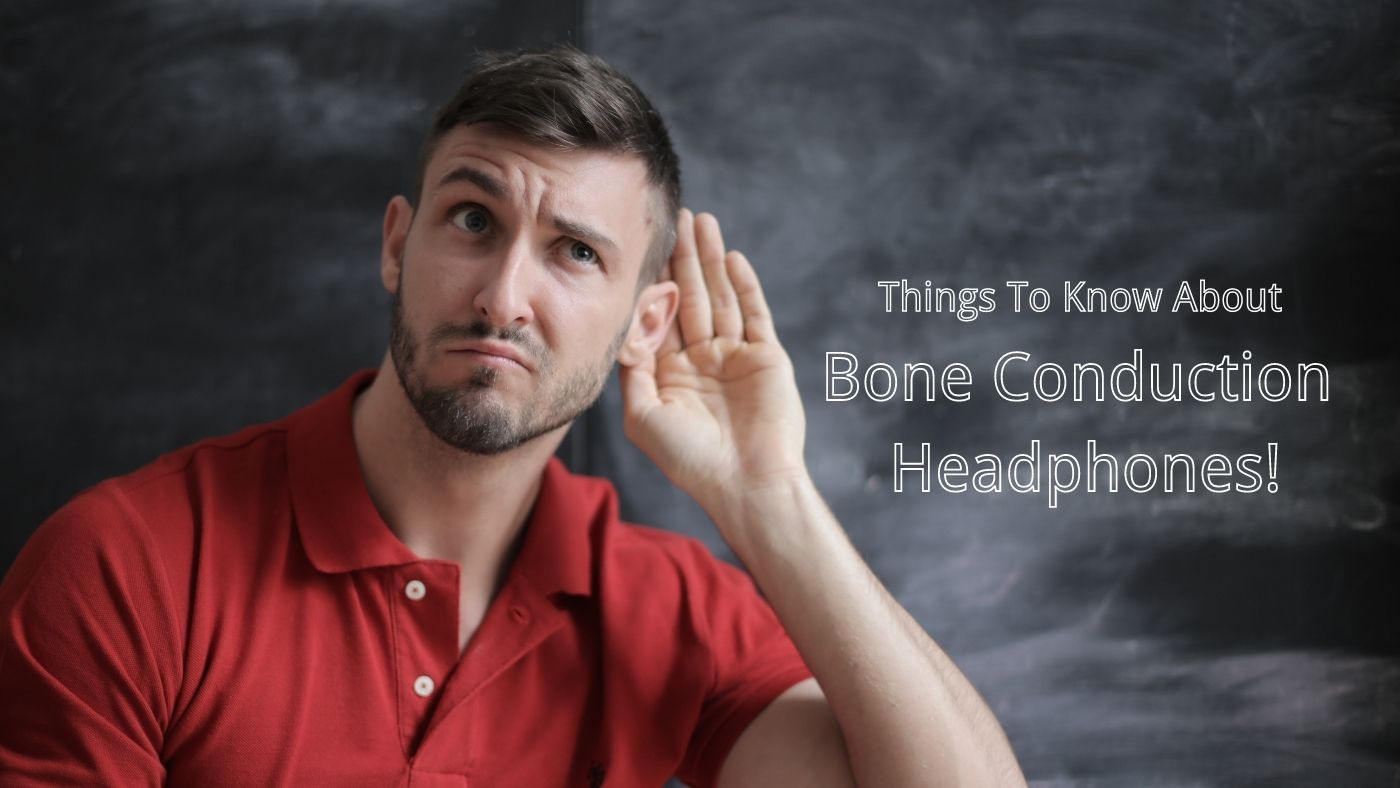Introduction
Bone conduction headphones are a relatively advanced technology in the world of headphones. They use the bones in your head to transmit sound instead of your ears. It makes them a fantastic option for people who cannot use traditional headphones, such as those who wear earplugs or have hearing impairments. Here're some things you should know about bone conduction headphones!
How Does Bone Conduction Technology Work?
Before we know how bone conduction headphones work, we must first understand how we hear. We typically think of listening as occurring when sound waves travel through the air and are detected by our ears.
1. Sound Waves Travel Through The Air.
Most sound waves are created by something vibrating, such as a person talking, an animal barking, or a guitar being played. These vibrations cause the air molecules around them to move.
2. Air Molecules Vibrate Our Eardrum.
As the air molecules vibrate, they bump into our eardrum. The eardrum is a thin part of tissue that separates the outer ear from the middle ear.
3. Eardrum Vibrates The Tiny Bones In The Middle Ear.
The eardrum's vibrations are passed on to the three tiny bones in the middle ear. These bones are called malleus, incus, and stapes.
4. The Vibrations Cross To The Inner Ear.
Vibrations from the middle ear bones travel to the inner ear, which is filled with fluid. Also in the inner ear are the cochlea and the vestibular sac.
5. Fluid In The Inner Ear Vibrates The Cochlea.
Fluid in the inner ear causes the cochlea, which is shaped like a snail shell, to vibrate. The cochlea is filled with the tiny hairs that move when the cochlea vibrates.
6. Brain Interprets The Signals As Sound.
Brain is able to interpret the electrical impulses as actual sound. With bone conduction headphones, the process is similar, but there are a few key differences.
Pros And Cons Of Bone Conduction Headphones!
Pros Of Bone Conduction Headphones.
- These headphones are fabulous for people with hearing impairments.
- They don't block out ambient noise.
- More comfortable than traditional headphones.
- Less likely to damage your hearing.
- Great for people who wear earplugs.
Cons Of Bone Conduction Headphones.
- They can be expensive.
- You may look a little strange wearing them.
- They may not work well if you have a tiny head.
- Not as widely available as traditional headphones.
Frequently Asked Questions About Bone Conduction Headphones!
1. Do Bone Conduction Headphones Work For Everyone?
A: No, they don't. Bone conduction headphones work best for people with hearing impairments or those who wear earplugs. This is because they allow sound waves to bypass the eardrum entirely.
2. Are Bone Conduction Headphones Comfortable?
A: Yes, they are usually more comfortable than traditional headphones. This is because they don't press against your ears.
3. Do Bone Conduction Headphones Damage Your Hearing?
A: No, they're less likely to damage your hearing than traditional headphones. Bypassing the eardrum protects it from potential damage.
4. How Much Do Bone Conduction Headphones Cost?
A: They can be expensive, but the price varies depending on the brand and model.
5. Where Can I Buy Bone Conduction Headphones?
A: They're not as widely available as traditional headphones, but you can find them online and in some stores.
How To Use Bone Conduction Headphones In A Safe Manner?
The first step is to always keep the volume at a safe level. This means that you should be able to hear other sounds around you, such as traffic or conversations. If you can't hear these things, then the volume is too high, and you could damage your hearing.
In addition, it is crucial to take breaks from using headphones. This can give your ears a chance to rest and recover from the noise exposure. Finally, make sure to clean the headphones regularly. This can prevent ear infections and other problems. By following these easy tricks, you can safely enjoy the benefits of bone conduction headphones.
Who Should Wear Bone Conduction Headphones?
Bone conduction headphones are a perfect choice for people with hearing impairments or those who wear earplugs. This is because they allow sound waves to bypass the eardrum entirely. In addition, they're more comfortable than traditional headphones and less likely to damage your hearing.
Are Bone Conduction Headphones Good For Calls?
Yes, bone conduction headphones are an excellent choice for making calls. Because they provide remarkable sound quality and can be used in noisy environments, they're ideal for phone conversations. Additionally, they're less likely to damage your hearing than traditional headphones.
Are Bone Conduction Headphones Suitable For Swimming?
Nowadays, there are many types of headphones that are designed for use in water. However, bone conduction headphones are still the best choice for swimming. Most people choose these headphones because they're waterproof and can float on the water.
Are Bone Conduction Headphones Safer For Jogging Near Cars?
Bone conduction headphones are the safer choice for jogging near cars. The traditional headphones can block out ambient noise, which could make it difficult to hear approaching traffic. However, bone conduction headphones allow you to listen to your surroundings, which can help you stay safe while jogging.
Can I Use Bone Conduction Headphones With Hearing Aids?
They can be used with hearing aids. In fact, they may even improve the sound quality of your hearing aid.
Can You Use Bone-Conducting Headphones With Earplugs In?
Yeah, that's actually one of the main reasons people use them. Because they don't press against your ears, they can be used comfortably with earplugs.
Why Is The Earbud's Output Audible To Other People?
The reason is that the earbud's output is audible to other people is that they use bone conduction technology. This means that the sound waves are sent through your bones to your inner ear, which can be heard by other people.
Conclusion
Bone conduction headphones are a unique and innovative way to listen to music. If you are looking for an alternative to traditional headphones, these may be a good option for you. They have many benefits, including the fact that they do not damage your hearing, and they allow you to hear your surroundings. However, there are also some things to remember before purchasing a pair of these headphones. Make sure to do your research so that you can find the best team for you and your needs!



